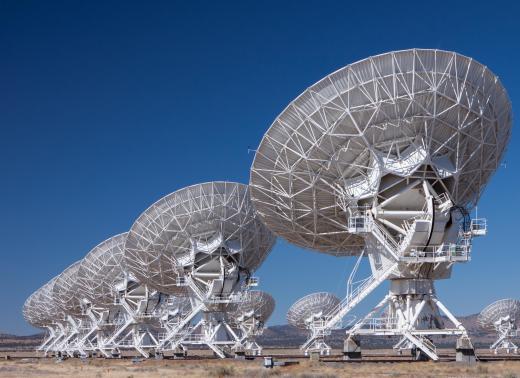What is the Interstellar Medium?
 Michael Anissimov
Michael Anissimov
The interstellar medium is the name scientists give to the highly dispersed gas and dust found between the stars in a galaxy. Of the mix, 99% is gas and 1% dust. Of the gas, 90% is hydrogen and 10% helium. The density of the interstellar medium varies depending where you are and in what galaxy, but it varies between a few thousand to a few hundred million particles per cubic meter, with an average in the Milky Way of approximately a million particles per cubic meter. Contrast this with the intergalactic medium, which has only 100-1000 particles per cubic meter, or the average density of the universe, which contains numerous massive voids, bringing it all the way down to only a single particle per cubic meter.
Astrophysicists are very interested in the precise qualities of the interstellar medium because it strongly influences the process of star formation. Denser regions are more likely to condense into stars. Very old galaxies, such as those which power quasars, are thought to have a higher average density than present-day galaxies, which have aggregated into stars and planets. Aggregation continues at all times on all scales of the interstellar medium, as new stars are born and die in clouds called nebulae. The launch of the Hubble Space Telescope greatly enhanced our knowledge of these bodies and how they move in and interact with the interstellar medium.

The first philosopher to recognize the existence of an interstellar medium was Francis Bacon, who wrote about it in 1626. Francis Bacon also originated the scientific method. He guessed that the interstellar medium moved along with the stars, and he was right. The diffuse particles of the interstellar medium move almost a million miles per hour around the galactic center. Depending on how close the particles are to the galactic center, they take somewhere between a few million years and a couple hundred million years to make a full rotation around the galaxy.

The interstellar medium is cold and does a good job of blocking out visible light where it is dense. We have trouble seeing our own galactic center because the dust makes it a trillion times fainter than it would otherwise be, in certain wavelengths. In the infrared portion of the spectrum, rays make it through, so observatories looking at the galactic center must rely on infrared.
AS FEATURED ON:
AS FEATURED ON:












Discuss this Article
Post your comments